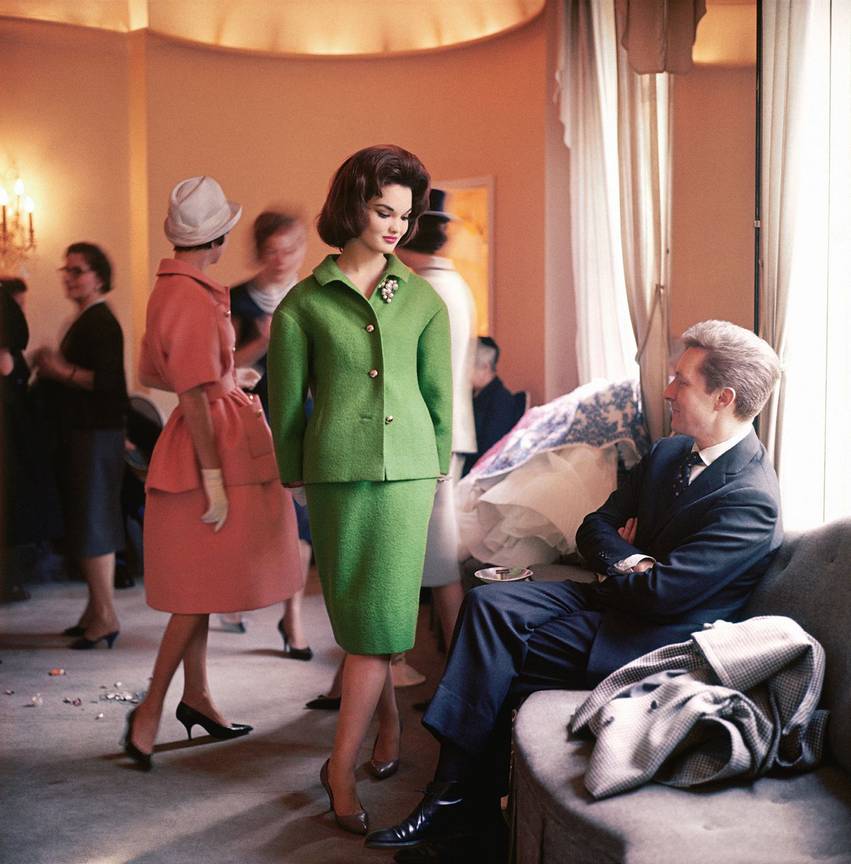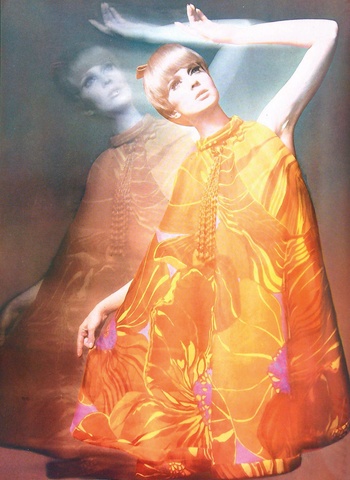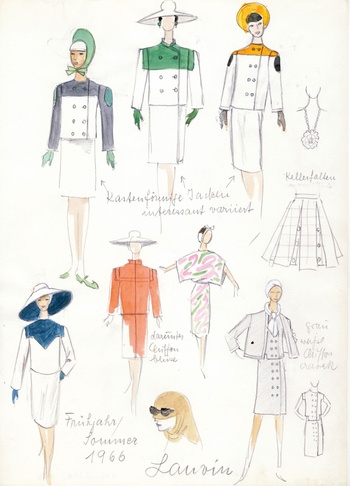It is hard to imagine that the Met Gala, the annual fashion party with extravagant outfits, would ever have chosen the Belgian Jules François Crahay (1917-1988) as inspiration for its theme, an honour that in 2023 did fall to his colleague Karl Lagerfeld. But the Liège-born fashion designer was far too modest and even a little people-shy for that.

© Mark Shaw
| Jules Francois Crahay sitting in front of Henrietta Shaw, duchess of Bedford
Fashion designer Jules François Crahay: unknown but not unloved
Whoever says Lagerfeld, thinks Chanel. Whoever says Crahay does not think of fashion houses Nina Ricci or Lanvin. But still, he worked for Maison Nina Ricci from 1952 to 1963 and then for Lanvin until the 1980s, where he put together an impressive number of successful collections. “A new star rises in the sky of Parisian fashion,” Women's Wear Daily magazine wrote in 1959. Jules François Crahay had just signed his first collection for Nina Ricci as head designer. A collection that was showered with praise. The press compared him to none other than Christian Dior. His creations at Nina Ricci found their way to Princess Paola, first lady Jacqueline Kennedy and actresses Ingrid Bergman and Claudia Cardinale.

© Jean-Louis Guegan
| From Jules François Crahay’s 1966 spring-summer haute couture collection for Maison Jeanne Lanvin.
You have to wonder as to the secret place where Crahay kept finding the inspiration to turn out successful collections season after season. He himself once stated that he does not believe in inspiration, only work. “Inspiration to me does not exist. I have been asked so many times what inspires me – painting, music, women... There is no such thing as inspiration – I truly believe there is only work.”
Workaholic
When he was out of contention for weeks in 1961 due to jaundice, they were at a loss at Maison Nina Ricci. Back then, Crahay designed not only the couture line, but also the new ready-to-wear Mademoiselle Ricci line and furs. At the time, Maison Nina Ricci was the third largest fashion house thanks to Jules François Crahay. Newspapers described him as “possibly the most overworked designer in Paris.”
In 1964, he moved to Maison Jeanne Lanvin after a creative disagreement with the heirs of Maison Nina Ricci. There, too, he showed himself a master at capturing the spirit of the times: “the desire for youth emancipation in the 1960s, rejection of Western society by the young, and the pacifist movements that accompanied the desire to re-enchant the world by exploring Eastern cultures and spiritualities,” says the catalogue Jules François Crahay. Rediscovering a Grand Couturier, that accompanies the exhibition at the Fashion & Lace Museum.

© collection by Trude Rein
| Design sketches for the Jeanne Lanvin 1966 spring–summer haute couture collection by Trude Rein
Cutting edge
At Lanvin, Crahay had himself noted as one of fashion's “great colourists with his colourful patterns making his 1970s Lanvin designs hugely desirable and influential.” In his creations, he showed himself to be a genius in print and colour and he pushed the envelope in terms of using cutting edge fabrics. His designs embodied the flower power movement. His last collection for Lanvin in 1984 got him yet another award.
Four years later – he was 70 at the time – he died unexpectedly of heart failure in Monte Carlo. Crahay who was “born with a needle in his hand” had for decades managed to make his mark on haute couture. His death was international news, but the brevity of the obituaries indicated that by then he had already been largely forgotten. He had never had the great success under his own name. The new generation of designers employed by fashion houses were better at cultivating their name and image. Crahay often found the meet-and-greet after the show too much. But quite a few couturiers did express admiration for Crahay. Christian Lacroix even dedicated his second haute couture collection to him. Years later, Lacroix made it clear that he was still waiting for the rehabilitation “of the most overlooked of all couturiers.”
Read more about: Expo , fashion , Mode , Design , in the picture , Jules François Crahay



